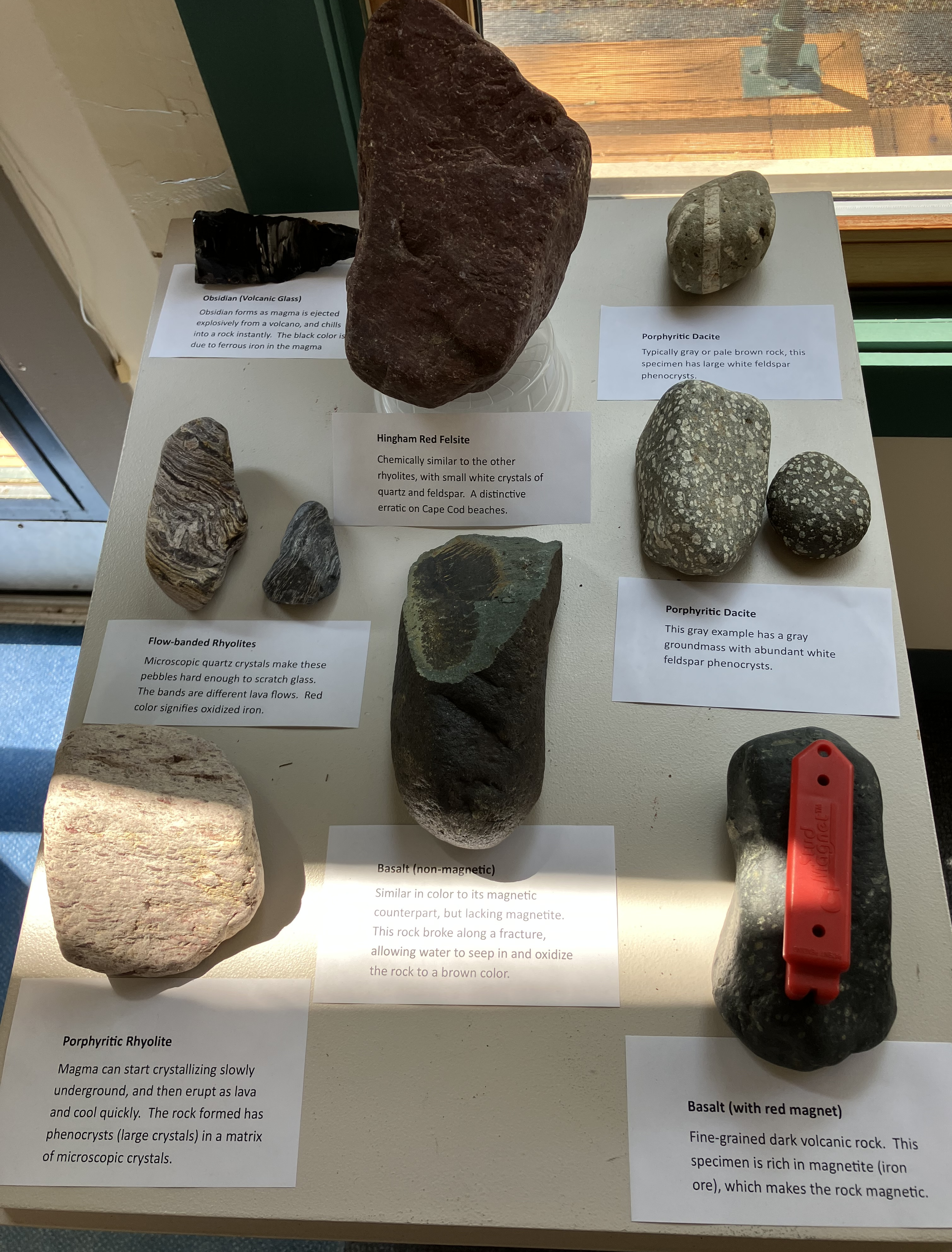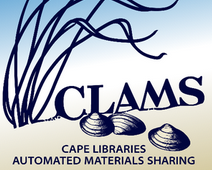

Basalt (non-magnetic)
Similar in color to its magnetic counterpart, but lacking magnetite. This rock broke along a fracture, allowing water to seep in and oxidize the rock to a brown color.

Porphyritic Rhyolite
Magma can start crystallizing slowly underground, and then erupt as lava and cool quickly. The rock formed has phenocrysts (large crystals) in a matrix of microscopic crystals.

Hingham Red Felsite
Chemically similar to the other rhyolites, with small white crystals of quartz and feldspar. A distinctive erratic on Cape Cod beaches.

Porphyritic Dacite
Typically gray or pale brown rock, this specimen has large white feldspar phenocrysts.

Obsidian (Volcanic Glass)
Obsidian forms as magma is ejected explosively from a volcano, and chills into a rock instantly. The black color is due to ferrous iron in the magma

Porphyritic Dacite
This gray example has a gray groundmass with abundant white feldspar phenocrysts.

Basalt (with red magnet)
Fine-grained dark volcanic rock. This specimen is rich in magnetite (iron ore), which makes the rock magnetic.

Flow-banded Rhyolites
Microscopic quartz crystals make these pebbles hard enough to scratch glass. The bands are different lava flows. Red color signifies oxidized iron.












